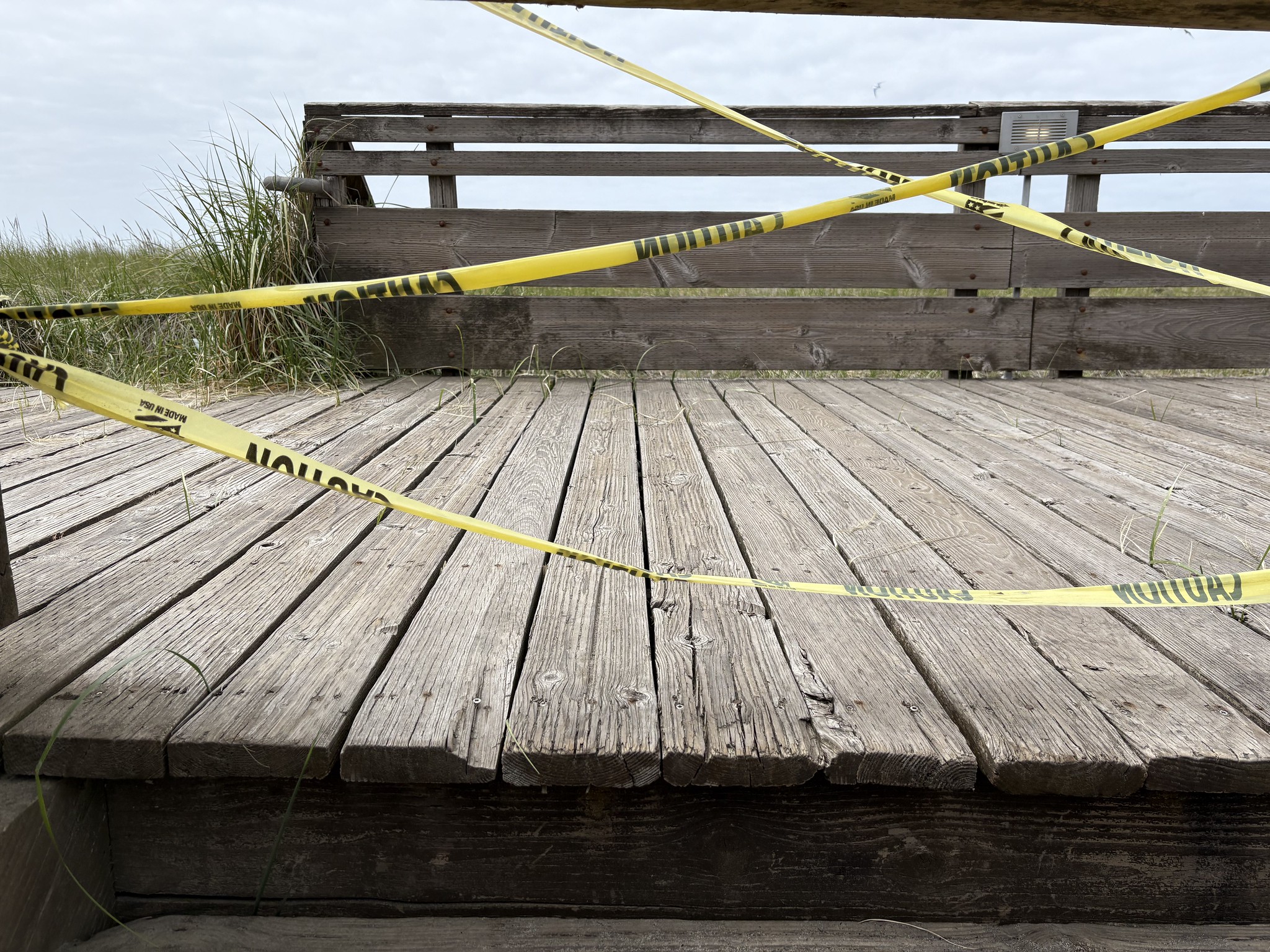Ocean acidity level means trouble for sea life
Published 4:00 pm Monday, December 1, 2008
PACIFIC OCEAN – We all know the frightening fact that if the earth were much closer to the sun, we’d all be toast.
A similar reality holds true for many sea creatures, which depend on steady pH levels in the ocean to maintain life.
Scientists are now observing lower pH levels in the world’s oceans, meaning the water is more acidic. Measured on a 1 to 10 scale, the lower the pH, the more acidic the water. A slight dip in pH – as small as .1 – can be a deadly consequence for some sea life.
As emissions increased over the last 50 years, the atmosphere and ocean waters have picked up higher levels of carbon dioxide. Burke Hales, an associate professor of chemical oceanography at Oregon State University, has been studying the increased presence of the gas caused in the ocean, which has created more acidic water.
Hales’ research shows that by the end of the 21st century pH levels could lower by .3 to .5 in the ocean, a 150 percent change from normal levels.
“It absolutely is a sign of the times,” said Hales. “We know very, very well how much carbon dioxide gets omitted because of how much of a role oil plays in the economy.”
Acidic water makes it difficult, if not impossible, for young shellfish, corals and other animals to grow life-sustaining structures, like shells.
“They don’t like it very much when things get acidic,” said Hales. “I think we don’t know as much as we need to about how sea life responds to this.”
The Whiskey Creek Shellfish Hatchery in Netarts has been testing to see if ocean acidification caused a recent rash of deaths among its shellfish larvae. Multiple factors have contributed to deaths among the larvae, representatives from the hatchery said, including more acidic water. This hatchery is owned by Peninsula native Mark Wiegardt and his wife Sue Cudd.
Corrosive oceanThe increasing levels of carbon dioxide emitted into the atmosphere are also absorbed by the ocean. Like any gas, carbon dioxide dissolves in water. But unlike other gases, it reacts and lowers the pH of the water. When there is more gas, water reaches higher acidity levels.
Hales was a member of a group of researchers, led by Richard Feely, an oceanographer at the National Oceanic and Atmospheric Administration, who spent part of 2007 examining rising acidity levels on West Coast shores.
The scientists compared the total amount of carbon dioxide against the total amount of other gases on the shores. Today, for every million molecules of other gases, there are 390 molecules of carbon dioxide. Before the industrial revolution, that number was 280.
It takes about 50 years for open ocean water that absorbed atmospheric carbon dioxide to reach the shore. Water that showed up on the West Coast last year was measured to have 315 molecules of carbon dioxide – 35 more than pre-industrial revolution numbers – enough to make water corrosive to some sea creatures’ shells, Hales said.
“Because atmospheric CO2 has risen steadily, each year’s upwelled water will have been in contact with a more recent atmosphere, which will have a higher CO2 level than the previous year,” said Hales. “In 50 years, we’ll see the water that was in contact with today’s 390 (parts per million) atmosphere.”
Ocean water that the research team measured has a pH about .1 lower than normal levels, a 30 percent increase in acidity, according to Feely. But pH levels could lower by .3 to .5 by the end of the century, a drastic increase, Feely said.
Feely co-authored a paper on the subject with Hales and three other researchers in which they document the effects of acidification.
Fight for lifeThese changes in the ocean’s waters already seem to be impacting certain ocean creatures, preventing organisms like coral reefs and shellfish, such as oysters, from fully developing shells.
As adults, oyster shells are made out of a tough, nonsoluble mineral called calcite. But shortly after they’re born, the animals develop a weak, soluble mineral called aragonite.
Aragonite is very sensitive to pH levels, and any minimal change could prevent the shells from fully developing.
“In certain experiments that have taken place, we can see some shells of organisms dissolving while they’re still alive,” said Feely. “This is a direct effect of the CO2 on the organism.”
Alan Barton at the Whiskey Creek Shellfish Hatchery said a combination of factors have led to the deaths of the hatchery’s larvae. The hatchery, one of the main suppliers of oyster larvae in the nation, produces about 10 billion each year.
A couple of months ago, production went down to about 20 percent of normal levels. “The industry is in huge shock that we haven’t been able to produce,” said Cudd, co-owner of the hatchery.
Oyster larvae grow aragonite shells about 24 hours after they are hatched. Barton is testing to see whether the more acidic water is preventing the shells from growing, thus killing the baby oysters.
Feely’s and Hales’ research points toward lower pH in the ocean as a primary cause of death. Barton said shellfish do die when heavy winds create acidic water upwells from ocean depths.
“If this is it, we can fix it pretty easily,” said Barton, who has degrees in engineering and oceanography. “I don’t know if it will make it business as usual.”
Even though it seems like acidification is contributing to deaths Barton said acidity isn’t the only culprit. Last year deadly bacteria infected the sea creatures. The hatchery was mostly successful in resolving that problem, but it has sprung up sporadically since, Barton said.
He said his research is promising enough to continue testing the effects of acidification.
The hatchery solved a pH-related problem earlier this year, when algae they feed to oyster larvae began dying like the larvae. Cudd and Barton only use ocean water in the hatchery, and they typically lower the pH of the water when growing algae because the plant grows better in highly acidic water, Cudd said.
When the algae started dying, they stopped lowering the pH. Once again, the algae began to thrive.
Unfortunately, the researchers don’t know for sure whether altering the pH to normal levels will help the larvae survive.
Hales and Feely said they hope to learn more about the subject on a planned research expedition next summer.
It happens elsewhereIf more acidic oceans are killing the sea creatures, the impact on the sea-life industries is obvious, Hales said. If the hatchery staff don’t figure out what is killing the oyster larvae soon, Cudd will have to shut down operations.
Hales said the changes are preventing an ocean-dwelling relative of the snail from growing its aragonite shell. Some salmon use the snail to bulk up, so they can move on to bigger foods, like squid.
But because the snails’ shells are dissolving, there are fewer of them for the salmon to eat. Without eating the snails, the salmon stay too small to eat the squid, and smaller than normal by the time fishers find them. The smaller salmon garner less money for fishers.
Ocean acidification also could increase the population of animals that prefer acidic water, like jellyfish, an annoying animal to catch in a fishing net.
“The only things we know about that do a lot better are the things that we don’t really prefer,” said Hales.
It still isn’t clear if the sea creatures will be able to adapt to more acidic waters – if any will be able to evolve less soluble shells.
What is clear is that the oceans are more acidic because of the rise in human carbon dioxide omissions, Hales said.
“There are amazingly still people out there who will still try to argue that point.”





